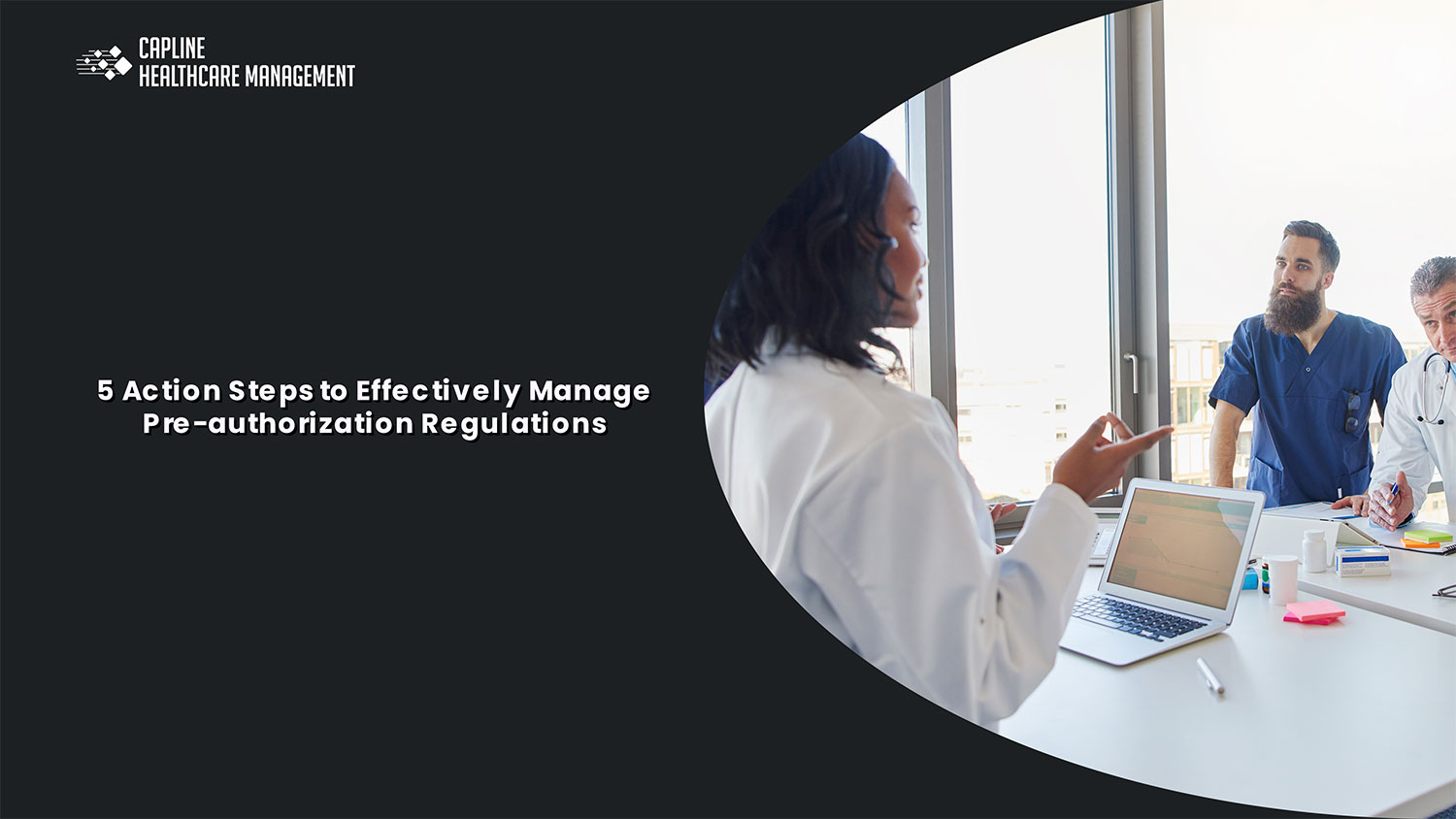5 Action Steps to Effectively Manage Pre-authorization Regulations
The medical sector has intricate dynamics that make administrative procedures complicated, particularly if we consider pre-authorization requirements. The nationwide set of regulations serves two essential purposes by delivering quick payments to providers and helping them stay in healthcare compliance. Proper pre-authorization management leads to simple medical billing operations that enhance general healthcare performance. The following article outlines five practical methods for effective pre-authorization regulation management.
Before delivering medical services, health insurance companies need to evaluate their necessity through the pre-authorization process. The process verifies that patients get the right care and preserves healthcare expenses at the same time. The healthcare regulations require pre-authorization procedures that affect medical care delivery for healthcare providers and their patients.
Why Pre-authorization is Important
Healthcare systems rely on Pre-authorization to fulfill multiple essential tasks that support patient care delivery along with cost management. Insurance companies use pre-authorization to confirm the importance of medical treatments to maintain effective healthcare resource distribution. The medical billing process becomes more efficient for providers because pre-authorization procedures decrease their risk of denied claims. Through the pre-authorization process, patients obtain the medical treatments they require but also reduce their expenses for the services.
The Evolution of Pre-Authorization
Pre-authorization has transformed dramatically over the past decade. What was once a simple procedural step has now become a sophisticated system of checks and balances that:
- Ensures patient safety
- Controls healthcare costs
- Maintains healthcare compliance
- Protects both patients and healthcare providers from unnecessary financial risks
Action Step 1: Implement Robust Insurance Verification Processes
The first step in handling pre-authorization involves guaranteeing your medical practice operates with an advanced system to verify insurance. The healthcare team needs to check patient insurance benefits prior to booking medical procedures and office visits for appointments. Early identification of problems allows you to address them before their issues expand.
Key Components of Insurance Verification
- Eligibility Verification: The provider should verify that insurance coverage is active for the planned medical treatments that the patient needs.
- Benefits Review: Reviewing benefits with the patient includes active knowledge of their insurance copayments, as well as deductibles and coverage parameters.
- Policy Updates: The regular updating of accurate patient insurance data prevents billing complications from occurring.
A complete insurance verification system enables your practice to decrease denied claims and achieve better financial outcomes.
Action Step 2: Stay Updated on Healthcare Regulations
Healthcare regulations transform regularly, so healthcare providers need to stay updated to maintain compliance. Organizations must understand the particular pre-authorization regulations that insurance providers and government programs enforce.
How to Stay Updated
- Regular Training: Your staff needs regular training sessions, which should include the most recent regulations and requirements.
- Industry Resources: The industry resources provided by associations and regulatory bodies provide essential information about pre-authorization policy changes.
- Compliance Audits: It is mandatory for your practice to perform consistent compliance audits on a regular basis. It will help you to discover and fix any problems with your pre-authorization procedures.
Action Step 3:Optimize Your Medical Billing Process
The management of pre-authorization requires an efficient medical billing process to function effectively. Your organization should simplify both claim submission procedures as well as denied claim follow-up procedures
Strategies for Optimizing Medical Billing
- Automate Where Possible: The practice should implement technology to automate recurring tasks that include claim submission processes and follow-up procedures.
- Clear Documentation: Medical records and documentation must contain detailed information that proves the essential nature of provided services.
- Timely Follow-Up: Act immediately on denied claims to resolve problems before resubmitting them.
Your medical billing process optimization will enhance claim accuracy and efficiency which resulted in faster payments alongside decreased administrative work.
Action Step 4: Foster Strong Relationships with Insurance Providers
The management of pre-authorization becomes more effective through sustained relationships with insurance providers. The successful completion of claims processes depends on ongoing communication between all parties who work together to solve problems.
Quick Tips for Building Strong Relationships
- Regular Communication: Insurance companies require routine updating through communication with the individual to raise concerns or obstacles encountered during the pre-authorization process.
- Collaborative Problem-Solving: Healthcare providers should work together to solve disputes and denials so both parties can handle them promptly.
- Feedback and Improvement: Healthcare providers should work together to solve disputes and denials so both parties can handle them promptly.
The development of strong connections with insurance providers allows for improved pre-authorization request processing, together with a better understanding.
Action Step 5: Invest in Technology and Training
Your ability to handle pre-authorization regulations becomes more effective through investments in proper technology solutions and training. Specialized software, along with continuous training for staff members, constitutes an essential part of your pre-authorization management system.
- Technology and Training Solutions
Pre-authorization Software: Your organization should acquire pre-authorization software that tracks and submits requests through its dedicated features. - Staff Training: Your staff needs complete training about new technologies as well as the current pre-authorization regulations.
- Continuous Improvement: Your processes and technologies should undergo regular reviews to maintain their effectiveness along efficiency.
The combination of technology implementation with training investments creates more precise and efficient pre-authorization processes that benefit both your medical practice and your patient population.
Conclusion
The proper management of pre-authorization regulations serves two purposes: it helps you maintain compliance standards while enhancing operational efficiency. Your practice can optimize pre-authorization processes and achieve better healthcare compliance through insurance verification improvements, regulatory updates, medical billing optimization, provider relationship development, technological investments, and employee training. Your practice benefits from compliance assurance through these steps, producing improved patient care and financial success.
Remember, the goal is not just healthcare compliance, but creating a patient-centric approach that simplifies complex medical and financial processes.
Final Takeaways
- Be proactive, not reactive
- Embrace technology
- Communicate clearly
- Never stop learning
- Put patients first
Your journey to mastering pre-authorization starts with a commitment to excellence and a willingness to adapt.



